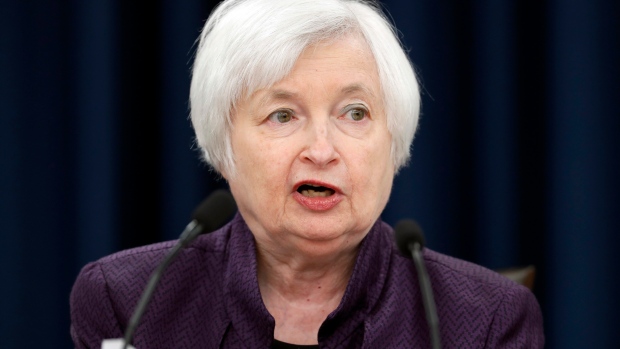Sep 21, 2016
Fed leaves key interest rate on hold, signals hike by end of year
, Reuters

The U.S. Federal Reserve left interest rates unchanged on Wednesday but strongly signaled it could still tighten monetary policy by the end of this year as the labour market improved further.
The Fed said U.S. economic activity had picked up and job gains were “solid” in recent months.
“The case for an increase in the federal funds rate has strengthened,” the U.S. central bank said in a statement following a two-day policy meeting.
It added that its rate-setting committee had decided against raising rates “for the time being,” until there was more evidence of progress towards its employment and inflation objectives.
The Fed has held its target rate for overnight lending between banks in a range of 0.25 percent to 0.50 percent since December, when it raised borrowing costs for the first time in nearly a decade.
“So this view that the U.S. economy is in good shape, because you’re just looking at the labour market at a time when productivity is contracting, isn’t looking at the holistic picture,” David Rosenberg, Gluskin Sheff’s chief economist and strategist, told BNN in an interview. “This is going to end up being – I’m talking about 2016 – the weakest growth year for GDP since the [recession] recovery began.
The central bank has appeared increasingly divided over the urgency of raising rates.
On Wednesday, Kansas City Fed President Esther George, Cleveland Fed President Loretta Mester and Boston Fed President Eric Rosengren dissented on the policy statement, saying they favored raising rates this week.
“It’s clearly a divided Fed – it’s not the first time we’ve had a divided Fed,” Rosenberg said.
At the same time, policymakers cut the number of rate increases they expect this year to one from two previously, according to the median projection of forecasts released with the statement. Three of the 17 policymakers said rates should remain steady for the rest of the year.
The Fed also projected a less aggressive rise in interest rates next year and in 2018, and cut its longer-run interest rate forecast to 2.9 per cent from 3.0 per cent.
"I’m not going to tell you the economy is in recession. It’s certainly fragile – but it’s weak," Rosenberg said. "In my opinion, it was the right policy, then we’ll see what happens in December"
But in a sign of growing confidence, the Fed said the near-term risks for the economic outlook “appear roughly balanced.” That means policymakers think the economy is about as likely to outperform forecasts as to underperform them.
Fed Chair Janet Yellen held a press conference at 2:30 p.m. EDT (1830 GMT).
The Fed in December signaled that four rate increases were likely this year, but that was scaled back in March due to a global growth slowdown, financial market volatility and concerns about tepid U.S. inflation.
The economy expanded sluggishly in the second quarter and added fewer jobs than expected in August. Inflation also showed signs of stirring last month.
The Fed’s decision, which came the same day that Japan’s central bank added a long-term interest rate target to its massive asset-buying program in an overhaul of its policy framework, was widely anticipated by economists.
A Reuters poll showed the median probability of a September rate rise was about 25 percent. Only 6 percent of those surveyed expected the Fed to raise rates, with the majority believing it would wait until December.
During the news conference,Yellen also dismissed recent comments by Republican presidential nominee Donald Trump accusing the Fed of artificially keeping interest rates low in an attempt to help President Barack Obama.
The Fed has policy meetings scheduled in early November and mid-December. Economists believe policymakers would avoid a rate hike in November in part because the meeting falls just days before the U.S. presidential election.
--With files from BNN